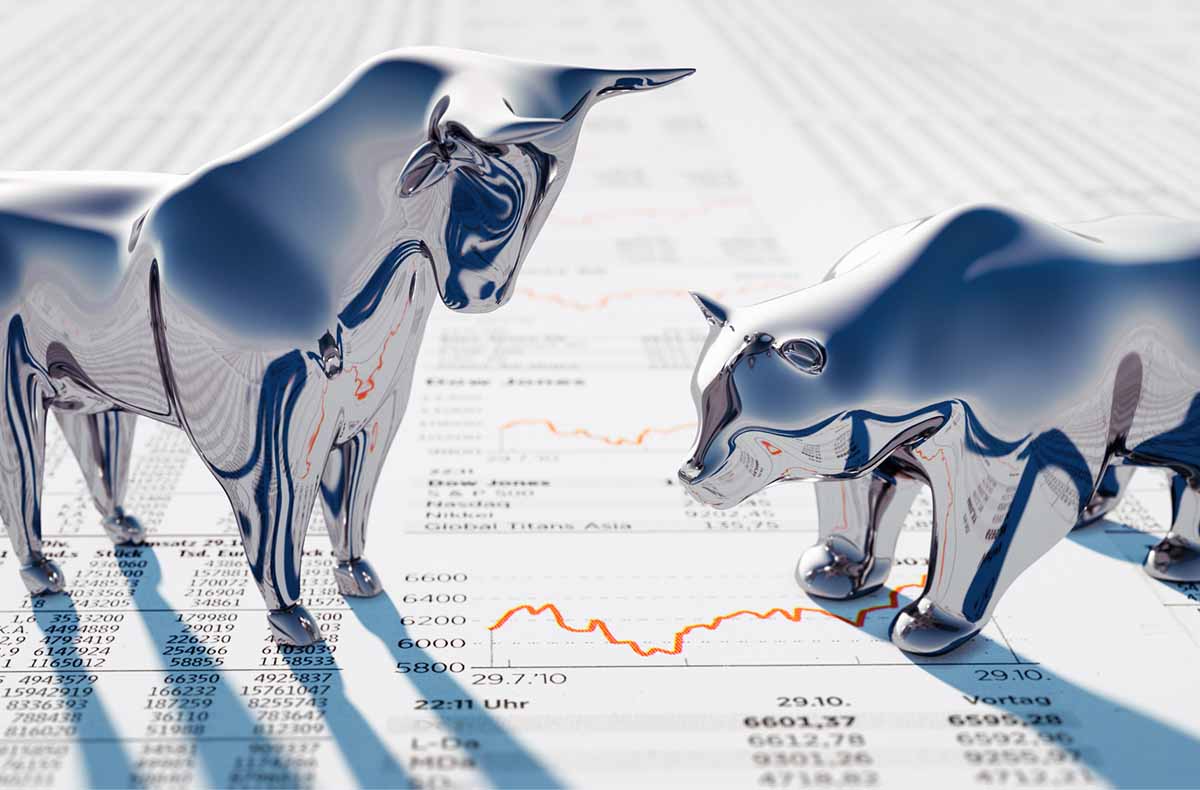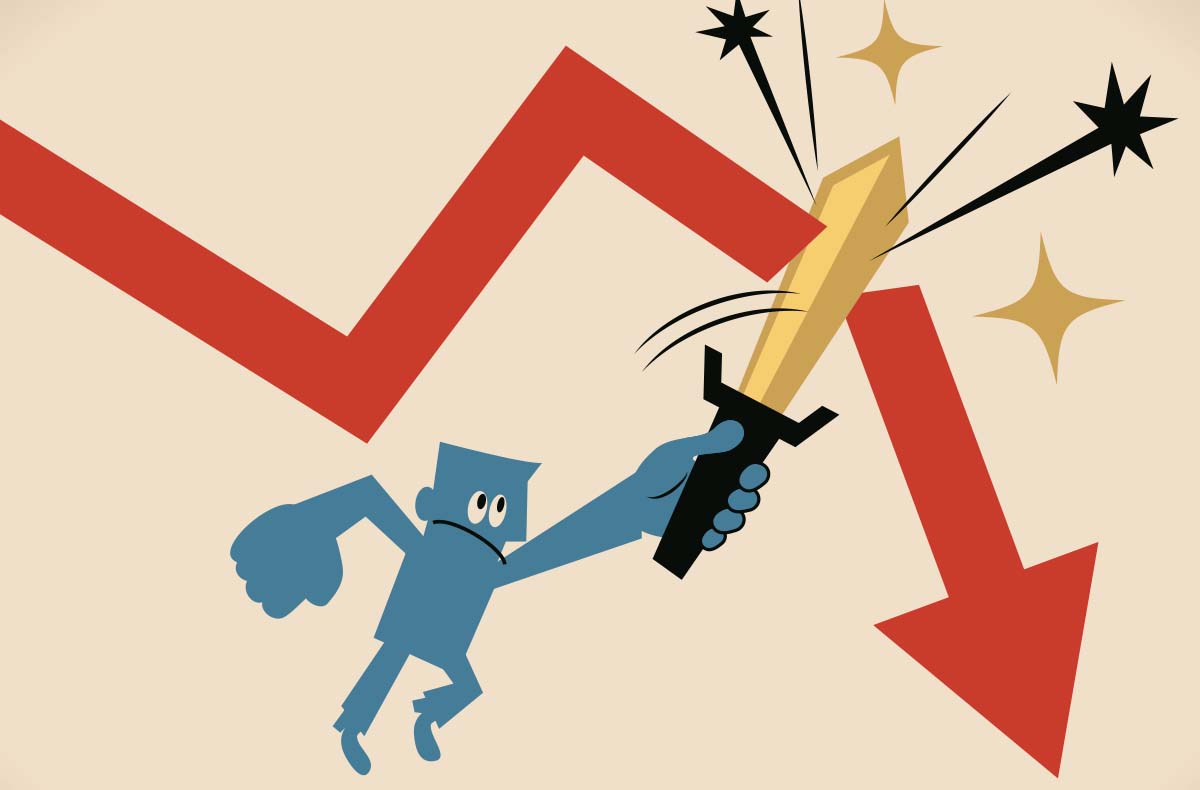
One of the most difficult aspects of trading is setting the right expectations. There are many approaches that use the price action of a stock, fund, or future to determine target prices. However, most people enter trades with only the assumption of whether they think the price will rise (bullish) or fall (bearish). The inability to understand the potential magnitude that the price can move in a specific timeframe is something that has the potential to dynamically change how you trade.
What is implied volatility?
When you look at an option quote, there are potentially two parts to the premium. The first is the intrinsic value. This is the value that is determined by exercising the option. For example, if you buy a $50 call and the stock is trading at $55, the option has $5 of intrinsic value since you have the right to buy the stock for $5 less than the current price of the stock.
While the option in this scenario has $5 of intrinsic value, the option will be trading for more than that prior to the expiration. The added value is referred to as extrinsic value. This is determined by the amount of time to expiration, interest rates and implied volatility.
Since we already know the time to expiration and the current Fed Funds rate, the unknown in this case is the implied volatility. That means that implied volatility captures the supply and demand component of any market price. More demand leads to higher implied volatility and more supply causes implied volatility to fall.
The ebb and flow of supply and demand causes the extrinsic value of an option to change throughout the trading day. Because of this, the market price of the option reflects the amount of movement that traders are expecting or what is being “implied.” Thus, implied volatility reflects the expected movement of the underlying by the expiration.
Applying implied volatility
Now we understand how options are priced, it makes sense that the implied volatility can help us understand the potential movement, but how does it help your trading?
This is where applying the expected move can take you from concept to application.
Many trading applications will provide the option implied volatility for every option contract in the option chain. If the option has an implied volatility of 30%, it suggests that the market is reflecting the stock can move +/- 30% in the coming year, and that it will stay in that range 68% of the time. See what just happened? The implied volatility provides a timeframe, the magnitude of expected movement and a probability range.
One of the issues with directly applying this new information is that virtually every option has a different implied volatility, and it can change greatly as you move from one expiration to another. As a result, it is typical to take an average of implied volatilities for a given expiration. That means that you can see the average implied volatility for a given expiration. Many brokerage platforms will display the annualized implied volatility (68% probability range) as well as the price movement expected by the expiration.
For example, the Apple Inc. (AAPL) options that are set to expire on July 21, 2023, have an average implied volatility of 22.91% and expected move of +/-13.06. With a current trading price of $175.16, that means the price is expected to move between $162.10 and $188.02 over the next 60 days, and it will stay in that range 68% of the time.
The expected move
At this point you’ve been introduced to what implied volatility is and how it translates to price movement and probabilities. I get it, you’re probably still wondering how you can actually use it, right?
One of the keys to using implied volatility and its expected movement is taking it one week at a time. That means using the implied volatility and the expected movement each Friday to project the expected move for the coming week. By taking the Friday’s close and the expected move at that time, you now understand what to expect for the coming week.
At TheoTrade, we have an indicator that plots the Friday’s close and the expected move automatically each week, but it is something that can be done on your own using the expected move or the at-the-money straddle. If your brokers platform doesn’t display the expected move along with the implied volatility, you can look at the call and put price for the strike price closest to the current stock price. Adding the two option premiums together for the next week’s expiration will give you the expected move as well.
Applying the expected move
Now you know how to find the expected move for the coming week, let’s look at applying it.
One of the great things about probabilities is that it can help shape the types of trades you put on. For example, what if the price moved dramatically higher so that the price was two times the expected move for the week? In this example, the Friday’s close was $100, and the weekly expected move is $5. What if the price moved $10 higher that week? How should you respond as a trader?
That relatively improbable move is something that can be taken advantage of. This is a point where a put vertical spread could be bought to trade a small move back into its range, or a call option could be sold. The ability to sell options for a high probability trade is a great way to apply the expected move.
Seeing the price move above or below the expected move is one signal to look for bullish and bearish option trades, but what about when it doesn’t move?
Another application of the expected move is when the price stays within the expected move for more than one week. If the price continues to stay within the weekly expected move for two weeks or more, this can create an opportunity to play the impending breakout in the price. One option strategy that can capitalize on that is a Gamma Iron Condor. This strategy involves buying a call and put vertical spread above and below the current price.
Conclusion
Most traders fail to trade in a consistent and repeatable manner. Option implied volatility and the expected move can help you use the market’s expectations for the underlying’s movement with a degree of consistency that so few achieve. Identifying the range of expected movement each week can allow you to trade directionally, non-directionally or using a higher probability trading approach. The flexibility and adaptability of the expected move can help you take your trading to the next level.



